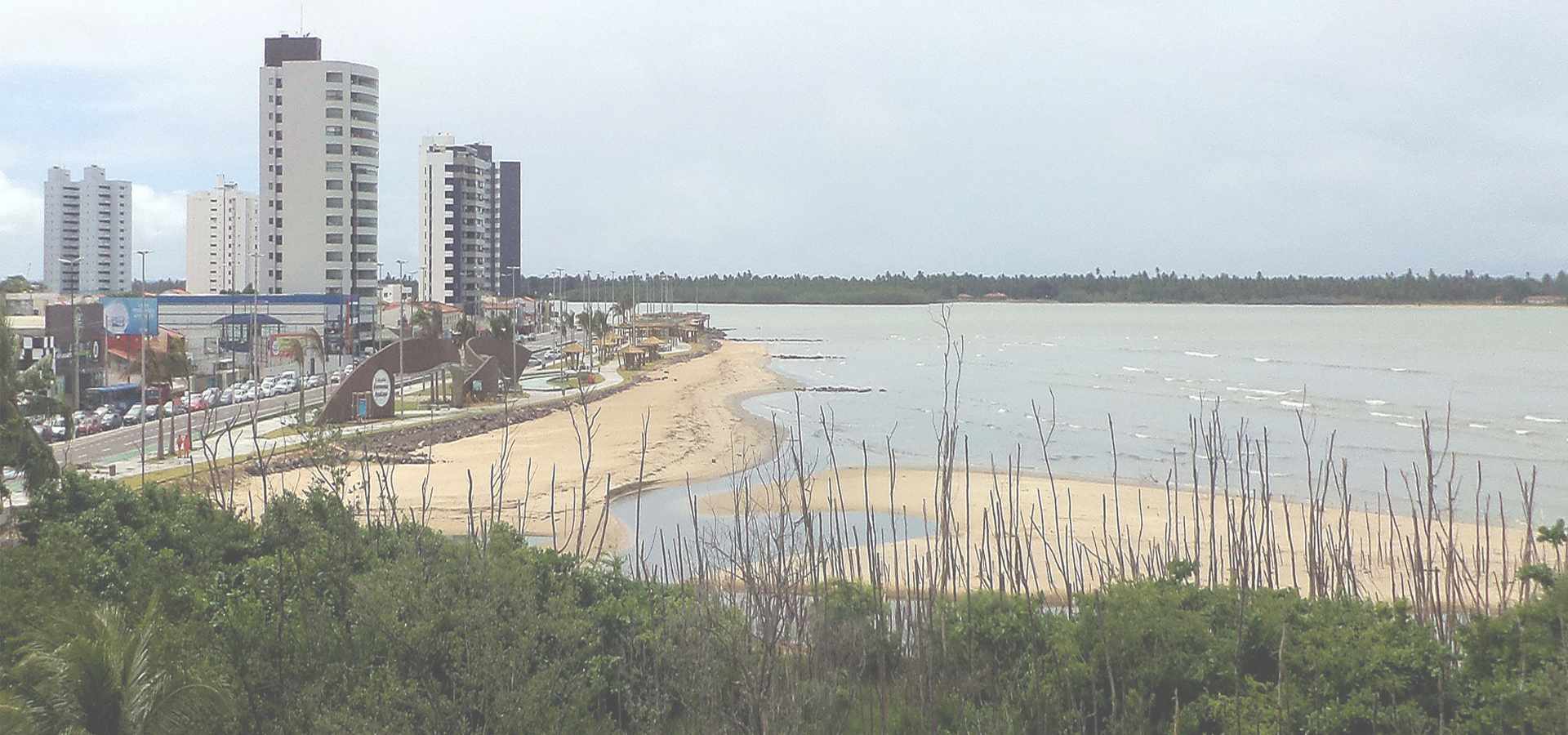Aracaju, Sergipe, Northeast Region, Brazil
🇧🇷 Aracaju is the capital of the state of Sergipe, Brazil, located in the north-eastern part of the country on the coast, about 350 km (217 mi) north of Salvador. The city represents approximately 33% of the state population. Adding to the populations of the municipalities forming the Metropolitan area: Barra dos Coqueiros, Nossa Senhora do Socorro and São Cristóvão. Its Metropolitan Cathedral Nossa Senhora da Conceiçao, dedicated to Our Lady of Immaculate Conception, is the archiepiscopal see of the Roman Catholic Archdiocese of Aracaju.
History The extinct unclassified Boime language (also spelled Poyme) was spoken by indigenous peoples near Aracajú on the São Francisco River.
The land of present-day Aracaju was located in a sesmaria given to Pero Gonçalves by the Portuguese crown around 1602. The land consisted of 160 km (99 mi) of coastline with small fishing villages. A village called Santo Antônio de Aracaju was recorded in 1699. It was located at the mouth of the Sergipe River at the Atlantic Ocean, and was founded by João Mulato, an indigenous Brazilian. The settlement saw little growth in the 18th century, and was part of the parish of Nossa Senhora do Perpétuo Socorro do Tomar do Cotinguiba. The capital of São Cristóvão presented numerous difficulties as the capital of Sergipe, primarily its inland location. São Cristóvão had only a small port on a river, and was accessed only with small boats. As a result, large ships were unable to land in Sergipe. Government officials in Sergipe began a search for land for a new capital in the 1850s. The beach that is now located in Aracaju near the mouth of the Sergipe River was a major point of interest. The state government transferred the customs and the Provincial Revenue Bureau to that location. They additionally built a post office and police sub-station. In addition, a port was built on the beach, called Atalaia.
The capital of the state of Sergipe was moved from São Cristóvão to Aracaju on March 17, 1855.
Economy The economy is based on services and industry.
The GDP for the city was R$13918124 (2013).
In recent years, the city has been invigorated by major investors from both eastern Europe (especially from Belarus and Russia) and China setting to be a key city on the Brics relations worldwide as well as a 'Mercocity' (adopted from Mercosur).
Tourism and recreation The city has emerged as a good choice in low-cost tourism. Seen and recognised as one of the safest (63 murders per 100,000; No. 12 city in world; List of cities by murder rate) capitals in the Northeast region and the lowest costs of living in the country, more recently has focused its tourism business in creating quality accommodation, such as world-renowned hostels. Planned public transportation improvements were aimed at increasing the comfort and integration to the visitors users. In advance of seeking access facilities, bus lines have been reformed and can be monitored in real time here
Sport At the 2016 Summer Olympics the city hosted teams from seven countries. Football athletes from Japan and gymnasts and swimmers curiously mostly from many eastern European countries like Poland, Austria, Belarus, Kazakhstan, Ukraine and Czech Republic established the city as home-base for training.
For the 2016 Summer Paralympics Games the city is accommodating athletes from Eurasian Economic Community countries such as the Kazakhstani paralympic team and the Belarus paralympic team, including paralympic swimmer champion Ihar Boki.
Transport: Air Aracaju is served by Santa Maria Airport, a domestic commercial airport. It dates to 1952 and became fully functional in 1958. The airport is located in the Santa Maria neighborhood of the city and is located 12 km (7.5 mi) from downtown Aracaju.
Transport: Road Aracaju is located on the northern segment of BR-101, a major north–south longitudinal highway in Brazil. It is also the easternmost point of BR-235, an incomplete highway which is projected to run from Aracaju west to Novo Progresso, Pará.
Education • Federal University of Sergipe • Universidade Norte do Paraná (Unopar).
Aracaju, Sergipe, Northeast Region, Brazil

Aracaju has a population of over 664,908 people. Aracaju also forms the centre of the wider Sergipe state which has a population of over 2,298,696 people.
To set up a UBI Lab for Aracaju see: https://www.ubilabnetwork.org Twitter: https://twitter.com/UBILabNetwork
Twin Towns - Sister Cities Aracaju has links with:
🇧🇷 Maceió, Brazil🇧🇷 Nossa Senhora do Socorro -10.849
🇧🇷 Senhor do Bonfim -10.455
🇨🇩 Lubumbashi -11.65
🇵🇪 Villa El Salvador -12.05
🇧🇷 Girau do Ponciano -36.817
🇧🇷 Currais Novos -36.511
🇧🇷 Santa Cruz do Capibaribe -36.2
🇧🇷 Campina Grande -35.891
🇧🇷 Nossa Senhora do Socorro -37.139
🇧🇷 Santana do Ipanema -37.233
🇧🇷 Pau dos Ferros -38.206
🇧🇷 Paulo Afonso -38.224
Locations Near: Aracaju -37.0517,-10.9221
🇧🇷 Nossa Senhora do Socorro -37.139,-10.849 d: 12.6
🇧🇷 Itabaiana -37.417,-10.683 d: 47.9
🇧🇷 Lagarto -37.664,-10.915 d: 66.8
🇧🇷 Penedo -36.583,-10.283 d: 87.6
🇧🇷 Girau do Ponciano -36.817,-9.883 d: 118.3
🇧🇷 Arapiraca -36.66,-9.752 d: 137
🇧🇷 Santana do Ipanema -37.233,-9.367 d: 174.1
🇧🇷 Maceió -35.722,-9.673 d: 201.2
🇧🇷 Alagoinhas -38.417,-12.133 d: 200.6
🇧🇷 Paulo Afonso -38.224,-9.398 d: 212.5
Antipodal to: Aracaju 142.948,10.922
🇬🇺 Hagåtña 144.746,13.467 d: 19671.2
🇬🇺 Tamuning 144.767,13.483 d: 19668.4
🇬🇺 Dededo 144.836,13.515 d: 19661.2
🇲🇵 Saipan 145.753,15.189 d: 19451.8
🇵🇼 Ngerulmud 134.627,7.487 d: 19025.2
🇮🇩 Jayapura 140.72,-2.529 d: 18499.2
🇮🇩 Manokwari 134.083,-0.867 d: 18378.3
🇫🇲 Palikir 158.15,6.917 d: 18287.3